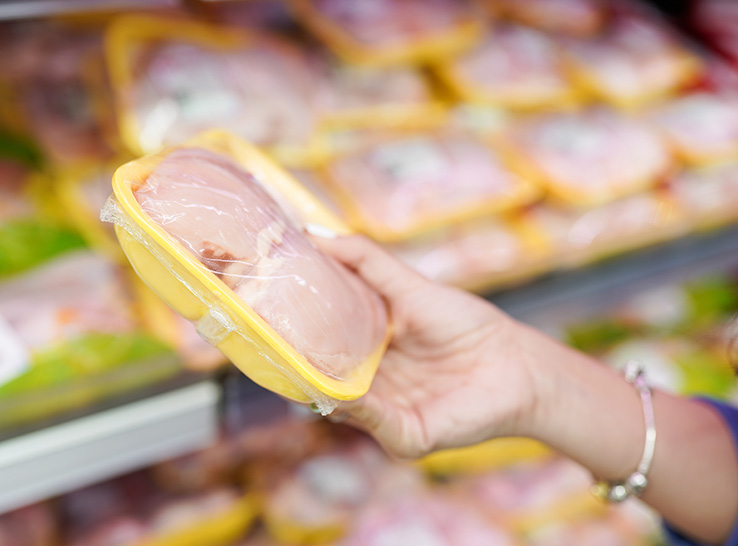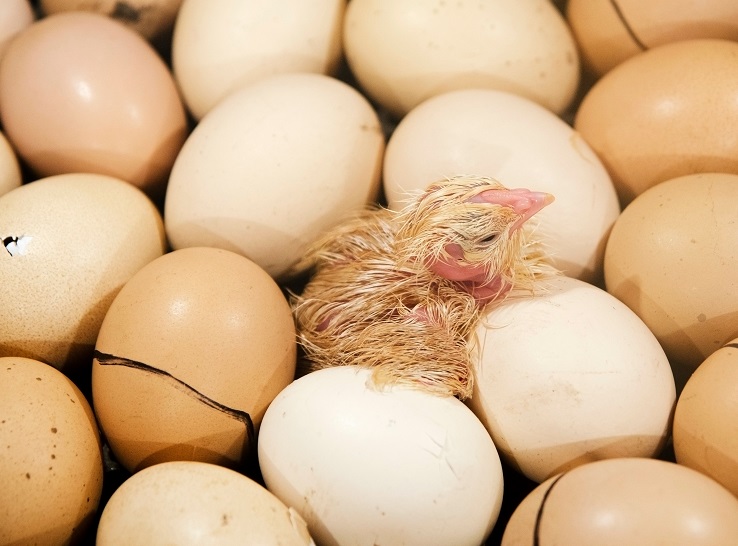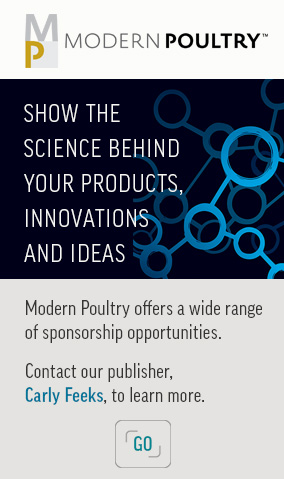US consumers have misconceptions about how poultry is raised, including a widely held but erroneous belief that there are added hormones or steroids in chicken meat, a national survey suggests. Poultry companies are also the least-trusted source for welfare information.
A majority (58.4%) of respondents to the survey of 1,006 adults, led by Danny Weathers, PhD, a marketing professor at Clemson University, believed that hormones are given to birds, even though FDA prohibits their use in poultry.
Just under half (45.9%) of survey respondents thought that broilers were raised in cages when, in reality, the only cages they ever see are during transportation to and from farms.
Fewer respondents said that poultry producers employed common welfare enhancements, such as climate-controlled barns (36.5%) and daily welfare checks (34.5%), were “probably true” or “definitely true,” he reported at the 2023 American Association of Avian Pathologists conference.
A labelling issue?
Knowing that some poultry producers make “no hormones” and “cage-free” claims on their meat packaging, Modern Poultry asked Weathers if the industry might be partly to blame for consumers’ misconceptions.
“The issue of who’s to blame, if anyone, is complicated,” he said, noting that some misconceptions about poultry production might arise from consumers’ knowledge of other farming practices, including the use of hormones in beef production.
“Should a poultry company refuse to acknowledge the possibility [of hormone usage] by not mentioning it on its labeling? Or should the company be more proactive in alleviating potential consumer concerns?” Weathers asked. “There are pros and cons of each approach, and the ‘right’ answer largely depends on the prevalence of specific consumer beliefs and the role or importance of these beliefs in purchase decisions.
“If the issue becomes important enough to consumers that it threatens the profitability of the industry, the industry will find solutions, perhaps with standardized labeling. Until then, I don’t see that the industry, as a whole, is to blame.”
Veterinarians and scientists most trusted
The study sought to obtain a wide-ranging view on consumer perceptions of welfare and learn more about where consumers got their welfare information and who they trusted.
In the survey, 77% of respondents said they sourced information from social media, followed by books and magazines (75%), government agencies (69%) and animal-welfare organizations (67%).
The consumer survey also found that large poultry companies and industry associations are the sources least trusted by US consumers for reliable information about poultry welfare. In contrast, veterinarians and researchers were ranked as the most trusted groups, followed by farmers and backyard-poultry owners.
“When it comes to communicating welfare issues, unsurprisingly, poultry companies are fighting an uphill battle,” Weathers said.
Welfare still not top of concerns
Despite some interest in welfare issues, how poultry is raised ranked fifth in importance out of seven considerations (freshness, quality, taste, price, how poultry are raised, size of piece, brand) when it came to purchasing poultry meat, with freshness, taste and quality of meat being their primary concerns.
When buying eggs, welfare ranked fourth from a shorter list of five considerations.
While flock welfare ranks relatively low when consumers are making buying decisions, the survey suggested that confidence in the production standards behind poultry products could be increased with the right messaging.
Packaging labelled with care standards and recognized welfare certification are the most trusted means of communicating welfare, while messages from farmers, images of the farm and social media messages from companies are trusted less.
“Consumers do believe some common farming practices, such as daily monitoring of barn conditions and bird-health guidance provided by a veterinarian or welfare director, positively impact poultry welfare. Consumers also react positively to labeling with welfare certification or care standards,” Weathers added.
“So, there are opportunities for poultry companies to increase trust by highlighting some of their current farming practices and adopting recognized welfare and care standards.”





